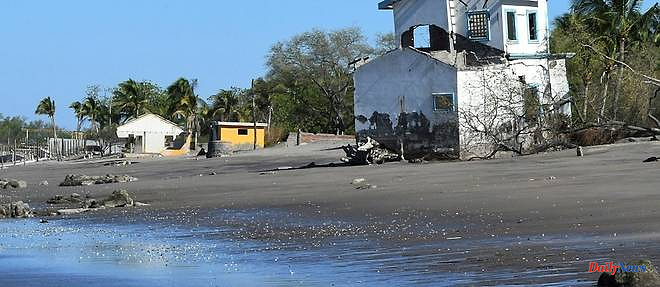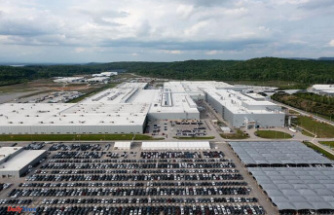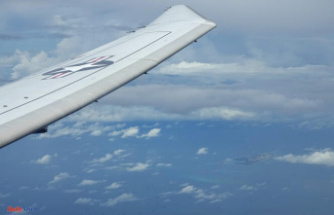The boat advances on the deceptive calm of the turquoise waters of the Pacific: a stone's throw away, on the sandy shore of the Honduran coast, the houses are devastated, eaten away by the ocean whose level is rising inexorably under the effect of climate change. .
The waves rush mercilessly to attack the half-dozen fishing villages of the Gulf of Fonseca, shared by Honduras, El Salvador and Nicaragua.
“The sea is advancing,” laments Telma Yadira Flores, 40, whose house in Cedeño, about 100 km south of the Honduran capital Tegucigalpa, although solid, was submerged last year.
From now on, she lives with her son and her daughter-in-law in a hovel made of planks on the sand: if "the sea comes again we will have to leave", she fears.
The locality of Cedeño, which has some 7,000 inhabitants, "could disappear completely within a century", warns a report by the association of the Committee for the Defense and Development of the Flora and Fauna of the Gulf of Fonseca (Coddeffagolf) .
Yet renowned for its paradisiacal landscapes, the gulf is considered by environmentalists as the "Ground Zero" of the effects of climate change in Honduras.
Two weeks ago, UN Secretary-General Antonio Guterres warned that rising sea levels threaten humanity with exoduses "of biblical dimensions" while "whole countries could vanish forever".
Experts and ministers from around the world are meeting on Thursday and Friday in Panama for the 8th annual "Our Ocean" conference, which aims to provide a framework for the "blue economy" (the ocean equivalent of the green economy). for the sustainable use and protection of the seas and oceans.
But already, in the Gulf of Fonseca, the breaking waves have destroyed without distinction modest houses and wealthy villas, part of the natural barrier of coconut trees, knocked down dikes, a marine biology laboratory, shops...
"Here was the house of Elvin Santos", a former vice-president of Honduras (2006-2008), said the pilot of the boat Luis Fernando Ortiz, 39, pointing to a ruin.
Everywhere in Cedeño, the desolation is visible: the school, which housed 400 children, had to be abandoned, as well as the police station and the central square.
In 17 years, the land has receded 105 meters, according to the Coddeffagolf report. "The sea ate six blocks", or about 600 meters, even assures Sergio Espinal, a 75-year-old fisherman, who lists: a football field, restaurants, hotels ... all engulfed.
The mangroves are also devastated, leading to the disappearance of the molluscs and crustaceans they shelter, deplore the inhabitants of Cedeno.
Fish are becoming rarer and even seabirds are starving while fishermen have to go ever further out to sea to cast lines and nets.
"Before, there were herds of dolphins, sharks, we fished for swordfish (...) now all that is lost", laments Luis Fernando Ortiz.
"The ocean is one of humanity's most precious resources: it is home to 80% of life on the planet and provides food for more than three billion people", underline the organizers of the conference "Our Ocean".
However, this "vital capital is in danger due to global warming" and "it is time for nations to work together" for its protection, they warn.
03/08/2023 05:04:03 - Cedeño (Honduras) (AFP) - © 2023 AFP












